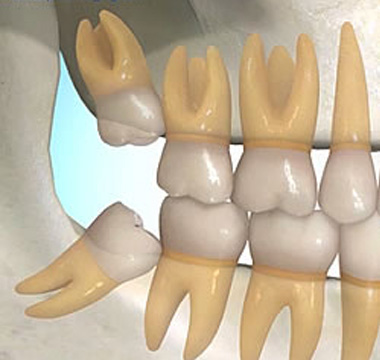
Third Molars
What is a wisdom tooth?
Wisdom teeth are the third molars and are typically the last teeth to erupt within the mouth. When they align properly and gum tissue is healthy, wisdom teeth do not have to be removed. Unfortunately, this does not generally happen. The extraction of wisdom teeth is necessary when they become impacted and are prevented from properly erupting within the mouth.
What is an impacted wisdom tooth?
A tooth becomes impacted when there is a lack of space in the dental arch and its growth and eruption are prevented by overlying gum, bone or another tooth. A tooth may be partially impacted, which means a portion of it has broken through the gum, or totally impacted and unable to break through the gum at all.
Should I have my wisdom teeth removed?
Impacted and partially impacted teeth can be painful and lead to infection. They may also crowd or damage adjacent teeth or roots. More serious problems may occur if the sac surrounding the impacted tooth becomes filled with fluid and enlarges to form a cyst. As the cyst grows it may hollow out the jaw and permanently damage adjacent teeth, the surrounding bone and nerves. Rarely, if a cyst is not treated, a tumor may develop from its walls and a more serious surgical procedure may be required to remove it. Complications may arise from partially impacted teeth and totally impacted teeth.
Recommended age for removal
It isn't wise to wait until your wisdom teeth start to bother you. In general, earlier removal of wisdom teeth results in a less complicated healing process.
Wisdom teeth are easier to remove when the patient is younger, since their roots are not completely formed, the surrounding bone is softer, and there is less chance of damaging nearby nerves or other structures. Removal of wisdom teeth at a later age becomes more complicated as the roots have fully developed (may involve the nerve), and the jawbone is denser. The American Association of Oral & Maxillofacial Surgeons recommends the evaluation of your teeth for third molars at 14-16 years of age to evaluate the need for their removal.